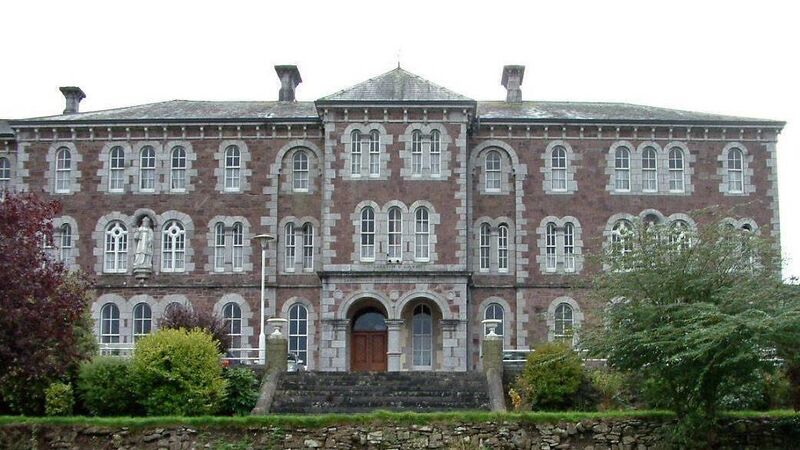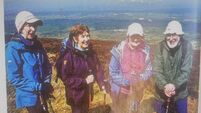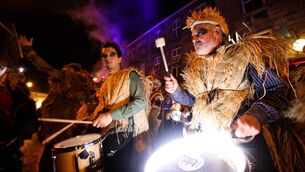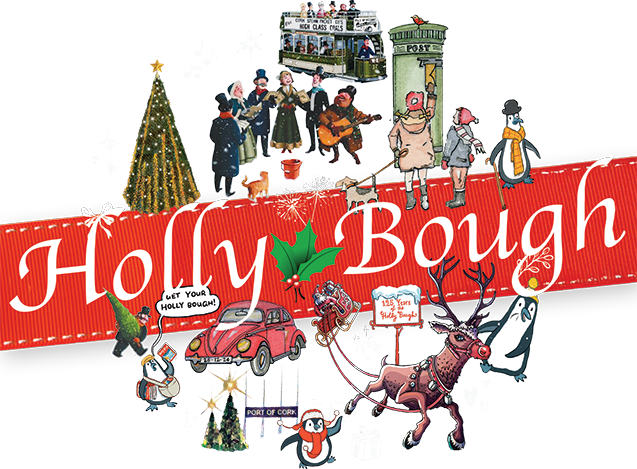‘I was overawed’: Recalling my days at St Colman’s College

John Arnold attended St Colman’s in Fermoy from 1969.
A magnificent, huge new building, bright and airy with mod cons I’d never dreamt of. The new wing had just been built and we were the initial intake of first years, over 120 of us divided into Classes 1A, 1B, 1C and 1D.
In my five years there I always ‘hovered’ between the B and C classes! Coming from a small two-roomed rural national school, St. Colman’s looked like what we imagined a big European university might look lie.
Remember, in my first three years in Bartlemy we had no water supply in the school, no flush toilets or no electricity. Going on the bus to Fermoy each day was an adventure in itself -I suppose before that I’d been on a bus just a few times -once to Ballybunion and on another occasion I recall to Mallow Railway Station to get the Train to Knock.
Opened first in 1858, the College had undergone extensions over the years but for a century of it’s existence remained largely the same edifice. This had all changed in the 1960s when the ‘extension’ was planned. After several years of to-ing and fro-ing the new building was opened in time for me to begin my secondary education.
My three Twomey uncles; Jeremiah, Dan and Sean had all attended the College during the War years -my own father had gone to the Brothers around the same time. My uncles were all boarders- they were only out the road from Castlelyons but boarding was the thing back then. Times were tough and conditions in the College were fairly spartan. Fr James Corbett (later PP in Rathcormac) was President at that stage. Uncle Dan often mentioned Polly who was a matronly member of the staff. Preparing the meals for the students was one of her many tasks. Polly apparently never got the hang of actually carving meat -maybe that process was too time-consuming, so the beef or mutton was kind of broken up into pieces and served that way. Then again, ravenous teenagers cared little for the niceties of cordon bleu cookery! Food parcels from home supplemented the College rations and the Dean supervised the distribution of these eagerly awaited brown paper gifts wrapped with twine.
Eating a piece of soap also quickly produced an upset stomach with the consequent turmoil! Food was rationed during the War and the boarders in St Colman’s were not exempt. Tea, porridge and bread and butter was the breakfast menu -when Fr Dugan became president black pudding on a Sunday morning was a welcome addition. Then in Bishop Roche’s time he introduced the rule ‘ No student shall henceforth be allowed to receive any parcel containing edibles’!
Thomas William Croke was appointed as the first President of the yet unfinished College in June 1858. After the opening with about 40 pupils in the autumn of 1858, Fr Croke (later Archbishop of Cashel) oversaw the great growth of the college in it’s first decade. Ill-health saw Croke resign as President in 1866. He went on to have an illustrious religious career and lived until 1902. He is best remembered as being the first patron of the GAA in 1884 and of course Croke Park in Dublin bears his name. He is intrinsically associated with Gaelic games. In his letter of acceptance to the GAA to become Patron he wrote ‘We have got such foreign and fantastic field sports{from England} as lawn tennis, polo, croquet, cricket, and the like - very excellent, I believe, and health-giving exercises in their way, still not racy of the soil, but rather alien’. In actual fact, while Croke was an advocate of handball and ensured that the Uppers and Lowers, two alleys, were built in Colman’s, cricket was in fact played on the green in front of the College building! (You can read more about that in the ).
Since I did my Leaving Cert in St Colman’s in the Summer of 1974, I’ve often been back to my alma mater -to concerts, parent-teacher meetings and different events over the years. I recall before Christmas of 2017, the death occurred of one of my old teachers, Canon Thomas McSweeney -in my time in the College we called him ‘A Tom’. He was a quiet, soft-spoken man who was a staff member for nearly 20 years. Before his burial in his native Macroom, his remains returned briefly to St Colman’s. Some of his former pupils gathered in front of the College as the hearse came in the lower gate and slowly up to the front door. That afternoon- and again last Friday night, I couldn’t help thinking of an early April day back in 1867 when the College pupils gathered on the terrace. It was the year of the failed Fenian Rising. Peter O’ Neill Crowley from Ballymacoda, a Fenian leader, was on the run. With comrades, he left East Cork and travelled on foot -he stopped one night at a house here in Bartlemy.
On to North Cork he went, but on March 31 at Kilclooney Wood near Kildorrery he and his comrades were surrounded and he was shot dead. His coffined body was shouldered all the way from Mitchelstown back to his native place. A young student in St Colman’s at the time was Patrick Augustine Sheehan from Mallow. Ordained a Priest and later a Canon, he was a prolific author and best remembered as ‘Canon Sheehan of Doneraile’. Years later, he wrote; “We, a lot of raw, young students, were massed on the college terrace, and I remember how we watched with beating hearts that great, silent moving multitude of men. But when the yellow coffin containing the mangled body of poor Crowley came in sight, swaying to and fro on the bearers’ shoulders, we lost control of ourselves out and out. We saw the body, or thought we saw it, rent and torn and bleeding from English bullets, and some of us were crying, and some of us were cursing, and more wanted to scale the college walls in spite of priest and Bishop.”
Last Friday night, a crowd assembled in the Priests’ Library in St Colman’s for a lovely, joyous and historic occasion. A few years before the College celebrated its 150th Anniversary in 2008, the project of writing a full history was mooted. A former pupil and teacher, Fr Bobby Forde was a great historian, and he began delving into the archives and researching the past story of the College. Sadly, Fr Bobby died in 2012 at the age of 90. The publishing of the book took longer than planned. Mr Jim Field, a former teacher of mine in St Colman’s, and UCC ‘s Andrew McCarthy took on the project. With the backing of the College and especially the Past Pupils’ Union, the book was printed recently and formally launched in the presence of Bishop William Crean last Friday. I was in early and, with other past pupils, got a ‘tour’ of the second and third floors of the original College building. These were where the boarders' dormitories were situated - boarding ceased in 2003. In my five years in the College I never frequented this part of the College -it was totally ‘out of bounds’ for day boys. We often heard the boarders talk of Siberia and Japan -their nicknames for their accommodation. One floor has now been transformed into classrooms as the student numbers are now in excess of 700.
A €6 million refurbishment of the 1858 building will commence in the New Year. So the story of St Colman’s College goes on. As I walked the corridors, I recalled Dr Croke and 1916 leader Thomas McDonagh, who taught here. I passed the President’s Office, where I begged to be allowed to give up Maths after dismal Inter Cert Results in 1972! Great hurling Harty game too, won and lost -all recalled in this brilliant publication ‘ ’.







 App?
App?







